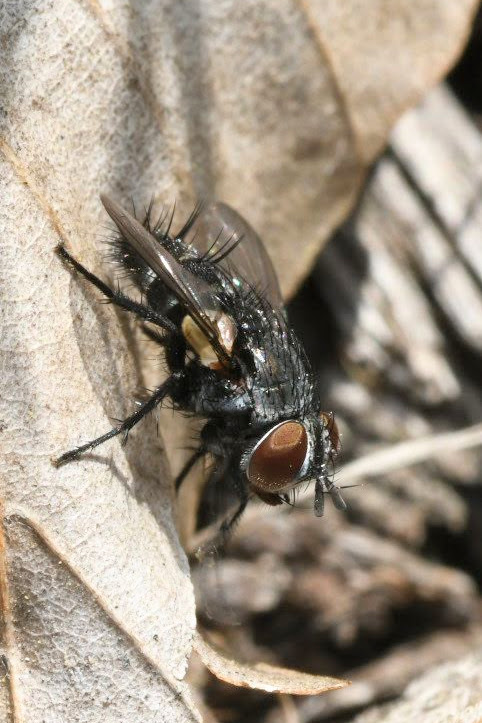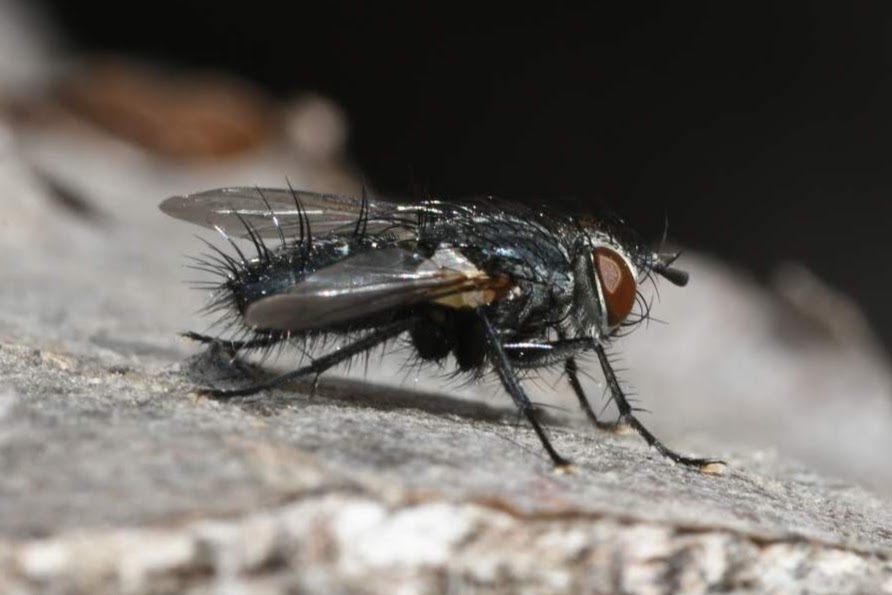Diptera.info :: Identification queries :: Diptera (adults)
Who is here? 1 guest(s)
|
Tachinidae, Sep 2, Piliscsaba, Hungary
|
|
| Xespok |
Posted on 03-09-2021 16:02
|
|
Member Location: Debrecen, Hungary Posts: 5550 Joined: 02.03.05 |
A smallish Tachinid, I must have seen this one several times in the past.
Xespok attached the following image:  [182.35Kb] Edited by Xespok on 03-09-2021 16:02 Gabor Keresztes Japan Wildlife Gallery Carpathian Basin Wildlife Gallery |
| Xespok |
Posted on 03-09-2021 16:03
|
|
Member Location: Debrecen, Hungary Posts: 5550 Joined: 02.03.05 |
Another view.
Xespok attached the following image:  [108.91Kb] Gabor Keresztes Japan Wildlife Gallery Carpathian Basin Wildlife Gallery |
| Xespok |
Posted on 03-09-2021 16:05
|
|
Member Location: Debrecen, Hungary Posts: 5550 Joined: 02.03.05 |
Similar to Nemorilla that I posted not long ago, but possibly only related, unless it is the female.
Xespok attached the following image:  [68.55Kb] Edited by Xespok on 03-09-2021 16:06 Gabor Keresztes Japan Wildlife Gallery Carpathian Basin Wildlife Gallery |
| Zeegers |
Posted on 03-09-2021 19:00
|
|
Member Location: Soest, NL Posts: 18823 Joined: 21.07.04 |
probably Platymyia fimbriata. Theo |
|
|
|
| Xespok |
Posted on 04-09-2021 10:12
|
|
Member Location: Debrecen, Hungary Posts: 5550 Joined: 02.03.05 |
Difficult. I tried to cross-check this in Mihályi. In Mihályi, the characteristics provided for this genus roughly match. This species is supposed to have one reclinate orbital bristle, and behind it one other reclinate bristle. This matches. Also the scutellar apical bristles are not erect, which is also the case here. What is not matching really well is the shape of the wing. In Mihalyi the key is mainly based on the costa, the presence of costal bristles on various parts of the costa. Now in Mihalyi the costa is split up to six regions. region 4 is from the r23 to 345, region 6 is from the M to the tip of the wing. Now In Mihalyi fimbriata is supposed to have longer region 6 than 4, with a characteristically bulged end of the wing, which does not seem to be the case here. The other thing is that P. fimbriata should have no or at most one pair of discal bristles. I think there are two pairs here, but I may be wrong.
Gabor Keresztes Japan Wildlife Gallery Carpathian Basin Wildlife Gallery |
| Zeegers |
Posted on 04-09-2021 16:24
|
|
Member Location: Soest, NL Posts: 18823 Joined: 21.07.04 |
The one reclinate orbital is total nonsense of old keys. Platymyia has two. Better try the Tschorsnig and Herting Key, freely available in English as Chris Raper’s website. It could be Paratryphera, the lookalike of Platymyia. I would not dare to say from these pics. The wing venation, I agree, is doubtful Theo |
|
|
|
| Xespok |
Posted on 04-09-2021 20:08
|
|
Member Location: Debrecen, Hungary Posts: 5550 Joined: 02.03.05 |
I tried the Tschorsing key. The generic key is quite intimidating, as it is not a highly branching key, rather one that always splits a smallish group of species, and usually with a combination of characters. THis makes it quite difficult to use for the first time, while in the long run it could be easier when one can eliminate a lot of groups. If Paratryphera, it certainly is not bisetosa, which has not been observed in Hungary, and has a different wing venation ratio than the fly in this thread. Since the palpi seem to be light, this could be only palpalis, not present in the Tschorsig key. as this is a Southern species. There is only one observation in Hungary. However, the single observations is from this general area in Hungary. Also Mihalyi states that the female of this species is not at all known, or has not been known at the time. Gabor Keresztes Japan Wildlife Gallery Carpathian Basin Wildlife Gallery |
| Zeegers |
Posted on 05-09-2021 08:41
|
|
Member Location: Soest, NL Posts: 18823 Joined: 21.07.04 |
Palpus is dark to me (second picture) Otherwise, Platymyia is not an option. Most Paratryphera are barbatula in central Europe. Theo |
|
|
|
| Jump to Forum: |
















